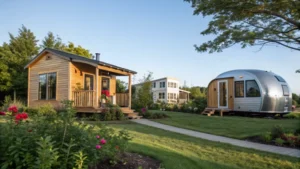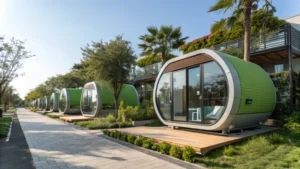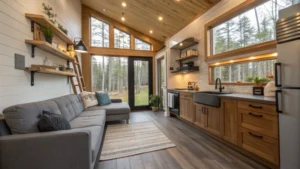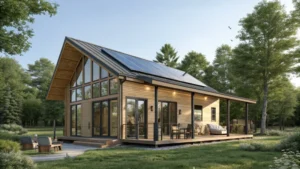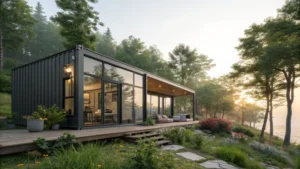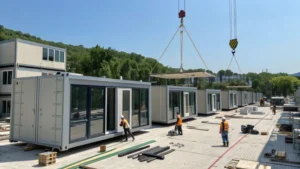
Choosing between building a single-family home or a duplex can feel like a financial puzzle.
Building a single-family home is generally more affordable upfront due to its simpler design and construction. But, if you're thinking long-term, a duplex can be a smart investment because of shared infrastructure and potential rental income, which can offset the higher initial costs.
When I first faced this choice, I was tempted by the initial savings of a single-family home. But the prospect of future rental income from a duplex kept pulling me back. It's not just about upfront costs; it's about envisioning the life you want. Let's dive deeper into what each option offers in terms of ongoing expenses and investment potential. Understanding these nuances can reveal surprising value in either path.
Building a single-family house is cheaper than a duplex.True
Single-family homes have simpler designs, reducing upfront costs.
Duplexes offer no potential for rental income.False
Duplexes can generate rental income, offsetting costs over time.
What are the Initial Construction Costs for Each?
Wondering how much it really costs to kickstart building your dream home? Let me take you on a journey through the financial maze of single-family homes versus duplexes.
Building a single-family home can cost between $150,000 and $400,000, while a duplex might range from $200,000 to $600,000. These figures hinge on factors like land costs, materials, and the complexity of design.
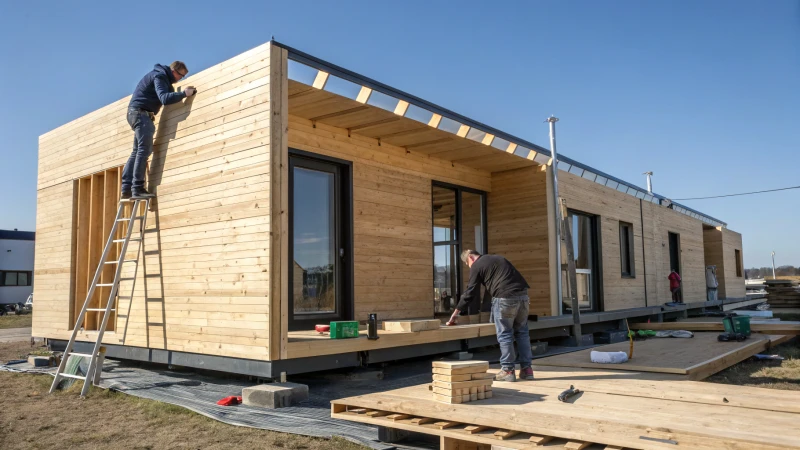
Cost Comparison: Single Family Home vs. Duplex
When it comes to the initial construction costs1 for single-family homes and duplexes, several factors come into play. A single-family home generally costs between $150,000 to $400,000. This includes land acquisition, materials, and labor.
On the other hand, building a duplex might range from $200,000 to $600,000. While the upfront cost per unit in a duplex is higher than a single home, the total cost can be more economical due to shared elements such as walls and foundations.
| Type | Cost Range | Factors |
|---|---|---|
| Single-Family | $150K - $400K | Land, Materials, Labor |
| Duplex | $200K - $600K | Shared Structures, Economies of Scale |
Factors Influencing Construction Costs
- Land Costs: The first time I realized how much land could cost was an eye-opener. The price tag varies wildly depending on where you are. For duplexes, especially in urban areas, using land more efficiently can cut down costs per unit.
- Material and Labor: Opting for high-quality materials and skilled labor might ramp up initial expenses but ensures longevity and durability. Learn more2 about sustainable materials that can help optimize these costs.
- Design Complexity: I learned that duplexes bring their own set of challenges with design complexities—like installing separate utility systems and ensuring good soundproofing. While this adds to the cost, it offers the advantage of dual living spaces.
- Economies of Scale: Developers often find that building duplexes is cost-effective. The shared resources reduce per-square-foot costs—a significant advantage if you’re looking to save in the long run.
Additional Considerations
- Zoning and Regulations: Before diving into a project, understanding local zoning laws is crucial as they can significantly impact your costs.
- Utility Installations: Setting up separate utilities for each unit in a duplex can be an added expense but is essential for independent living spaces.
- Long-term Investment: Even though the initial costs for a duplex are higher, the potential rental income from two units can make it a worthy investment over time.
Evaluating these factors is key to making informed decisions about initial construction costs. Aligning them with your financial goals can pave the way to fulfilling your housing aspirations. For more insights on construction budgeting3, consider exploring additional resources and seeking expert consultations.
A duplex is always cheaper to build than a single-family home.False
Duplexes have higher initial costs but can be more economical overall.
Shared structures reduce per-unit costs in duplex construction.True
Economies of scale make shared elements like walls cost-effective.
How Do Land Requirements Impact Overall Costs?
Have you ever stood on a piece of land, dreaming of what could be built there, only to feel overwhelmed by the hidden costs lurking beneath the surface?
Land requirements impact costs by influencing the land purchase price, development expenses, and compliance with local regulations. Smaller plots in urban areas might cost less but require clever design solutions.

When I first dove into the world of construction, I remember standing on a plot of land—bare, yet brimming with potential—and feeling a mix of excitement and dread about all the hidden costs. It’s funny how a stretch of earth can seem so full of possibilities, yet so daunting.
The Role of Zoning Laws
Navigating zoning laws felt like deciphering an ancient map. They dictated what could be built, and sometimes it seemed like they had a mind of their own. For instance, once I needed a zoning variance4 to build higher, which meant diving into legal fees and enduring an approval process that felt endless.
Minimum Lot Sizes and Their Implications
I learned the hard way that minimum lot sizes could be both friend and foe. Larger lots equaled higher costs but promised more creative freedom. Conversely, smaller lots challenged me to think outside the box, like when I opted for modular designs to squeeze every drop of potential from limited space.
Building Codes and Compliance Costs
The first time I encountered building codes, I thought they were just about safety. But soon, I realized they had a direct line to my wallet. Especially when designing for earthquake-prone areas—those advanced engineering solutions didn’t come cheap. A detailed guide5 on regional building codes can help developers plan effectively.
Case Study: Urban vs. Rural Development
I found myself comparing urban and rural plots like a real-life Monopoly game. In cities, high land costs pushed me to innovate on smaller scales—like duplexes with shared walls to save costs. Meanwhile, rural plots offered space at a lower price but came with the challenge of adding infrastructure.
| Factor | Urban Area Impact | Rural Area Impact |
|---|---|---|
| Land Cost | High due to demand | Lower but more infrastructure |
| Development Strategy | Vertical, efficient designs | More space for horizontal |
| Compliance Requirements | Stricter with more fees | May vary with less complexity |
Economies of Scale
One of my aha moments was realizing economies of scale could be my ally. By building multiple units on a single plot, costs per unit dropped significantly—kind of like getting a bulk discount at your favorite store. A comprehensive analysis6 on this can be insightful for prospective developers.
These experiences taught me that land requirements aren't just lines on paper—they're the unseen forces that shape every decision and dollar spent in development.
Zoning laws can increase development costs.True
Zoning laws impose restrictions that may require additional legal fees and approvals.
Rural land is always cheaper than urban land.False
While rural land often costs less, infrastructure investments can increase total expenses.
What Are the Long-Term Financial Benefits of Each Option?
Ever found yourself torn between the idea of building a single-family home or opting for a duplex? It's a choice that could shape your financial future.
A duplex can provide dual rental incomes and shared costs, offering a lucrative investment, while a single-family home might appreciate more due to its privacy appeal. Choose based on your financial aspirations and lifestyle needs.
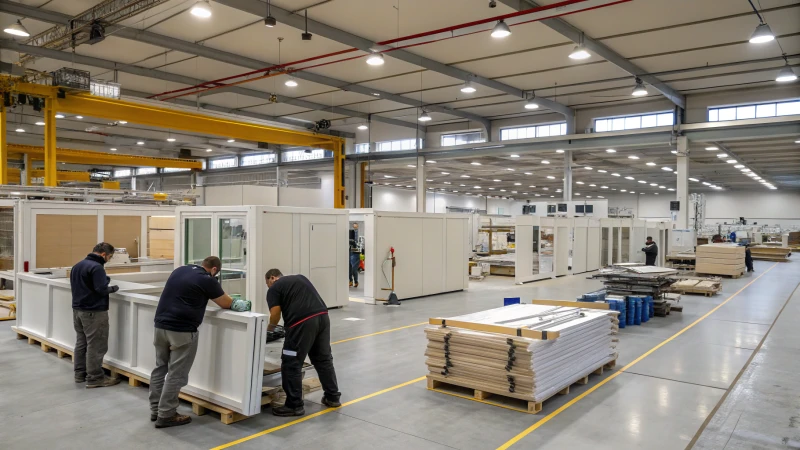
Rental Income Potential
Let me share something from my journey into real estate investments. When I considered the options, a duplex7 seemed like a goldmine for rental income. Picture having two separate units; you could live in one and lease out the other. This setup wasn't just a theoretical advantage—it was a practical way to offset mortgage payments, a method that resonated with me.
In contrast, a single-family home generally lacks this consistent dual-income opportunity. Sure, you can rent out the entire house, but it’s not quite the same level of income assurance. Still, it can be a great source of financial benefits, especially if you prefer handling one tenant at a time.
Maintenance and Utility Costs
Now, when it comes to costs, here's where my experience with shared expenses in a duplex8 shined. Imagine splitting roof repairs or landscaping bills with someone else—suddenly, the financial burden lightens. Shared walls also mean lower heating and cooling expenses per unit.
On the flip side, owning a single-family home means every maintenance dollar comes straight from your pocket. While this might sound like a drawback, it does give you full control over how things are managed. No need to negotiate with neighbors about who's responsible for what.
| Cost Factor | Duplex | Single-Family Home |
|---|---|---|
| Maintenance | Shared, potentially lower | Higher, individual |
| Utility Costs | Lower due to shared walls | Potentially higher |
Appreciation and Resale Value
Over time, I learned that single-family homes often appreciate more due to their inherent privacy and space—something many buyers find irresistible. Experts suggest9 that these homes may see faster appreciation in certain markets.
Duplexes also have their charm, especially for investors looking for rental income opportunities. They tend to hold strong demand in areas with a high rental market, making their resale value quite competitive.
Flexibility and Future Use
A duplex offers incredible flexibility—think about living in one half while renting out the other or even accommodating family members without additional housing expenses. This flexibility10 is something I found particularly appealing as I planned long-term living arrangements.
With a single-family home, you might lose out on that flexibility but gain privacy and autonomy over your property. It's also easier to manage renovations or expansions without having to worry about tenants or shared spaces.
Understanding these aspects helped me align my choices with my financial goals and lifestyle preferences. Whether it's the allure of dual-income streams or the potential for rapid appreciation, each option brings its own set of advantages.
Duplexes always have higher appreciation rates than single-family homes.False
Single-family homes often appreciate faster due to privacy and space.
Duplexes can offer lower utility costs than single-family homes.True
Shared walls in duplexes lead to decreased heating and cooling costs.
How Do Maintenance and Utility Costs Compare?
Ever been caught off guard by unexpected home expenses? Navigating maintenance and utility costs can feel like managing a mini economy at home.
Maintenance costs cover regular property upkeep to prevent wear and tear, like HVAC checks or plumbing repairs, while utility costs are monthly expenses for services such as water and electricity. These differ in terms of predictability and control.

Maintenance Costs: The Essentials
I remember the first time my AC unit broke down during a heatwave. It was one of those moments that taught me the importance of regular maintenance. Maintenance costs are all about keeping a property in good shape, like making sure the lawn doesn’t turn into a jungle or the plumbing doesn’t decide to have its own water show. These expenses can be planned out but sometimes surprise us with urgent repairs, like fixing a roof after a storm.
| Maintenance Task | Estimated Cost Range |
|---|---|
| Lawn Care | $50 - $200/month |
| HVAC Checkup | $70 - $100/visit |
| Plumbing Repairs | $175 - $450/repair |
Utility Costs: A Breakdown
Utility costs can be as unpredictable as my teenage son's mood swings. These are the bills we see every month for essentials like electricity and water. I’ve learned that turning off lights when leaving a room can help, but things like an unusually hot summer can still spike our energy bills. The good news is there are ways to keep these costs in check, like investing in energy-efficient appliances or smart home technology.
| Utility Type | Average Monthly Cost |
|---|---|
| Electricity | $100 - $200 |
| Water | $40 - $80 |
| Internet | $50 - $100 |
Factors Influencing Costs
Several factors can influence both maintenance and utility costs. I've noticed that the age of my home plays a big role—older homes seem to demand more attention. For utilities, things like energy tariffs and seasonal changes can make a big difference. I’ve found that keeping up with energy-efficient solutions can really pay off, both for my wallet and the environment.
To dive deeper into how to manage these costs, consider exploring energy-efficient practices11 or reducing utility expenses for homeowners.
Understanding these aspects can help property owners like us better manage our budgets and make informed decisions about where to allocate resources effectively. Whether it’s planning for a rainy day or just ensuring we’re not wasting resources, every bit of knowledge helps.
Maintenance costs can be predicted accurately.False
Maintenance costs often include unexpected repairs, making them less predictable.
Utility costs are influenced by weather conditions.True
Weather affects utility usage patterns, impacting costs like electricity for heating or cooling.
Conclusion
Building a single-family home is generally cheaper upfront, but duplexes offer long-term investment potential through rental income and shared costs, making them financially appealing over time.
-
Discover a detailed comparison between single-family homes and duplex construction costs to aid in budgeting decisions. ↩
-
Learn how sourcing sustainable materials can optimize your construction budget and enhance project quality. ↩
-
Explore tips and resources to effectively budget your construction project for better financial management. ↩
-
Understanding zoning variances helps anticipate legal fees and project delays, aiding in budget planning. ↩
-
Knowledge of regional building codes ensures compliance and helps avoid unforeseen expenses. ↩
-
Analyzing economies of scale reveals cost-saving opportunities in multi-unit developments. ↩
-
Explore how duplexes generate steady rental income streams to aid mortgage payments. ↩
-
Learn about shared maintenance expenses that can reduce overall costs in duplexes. ↩
-
Understand market factors affecting appreciation rates for single-family homes and duplexes. ↩
-
Discover the flexibility and future use advantages of owning a duplex. ↩
-
Discover practical tips on minimizing utility bills to manage household expenses efficiently. ↩



